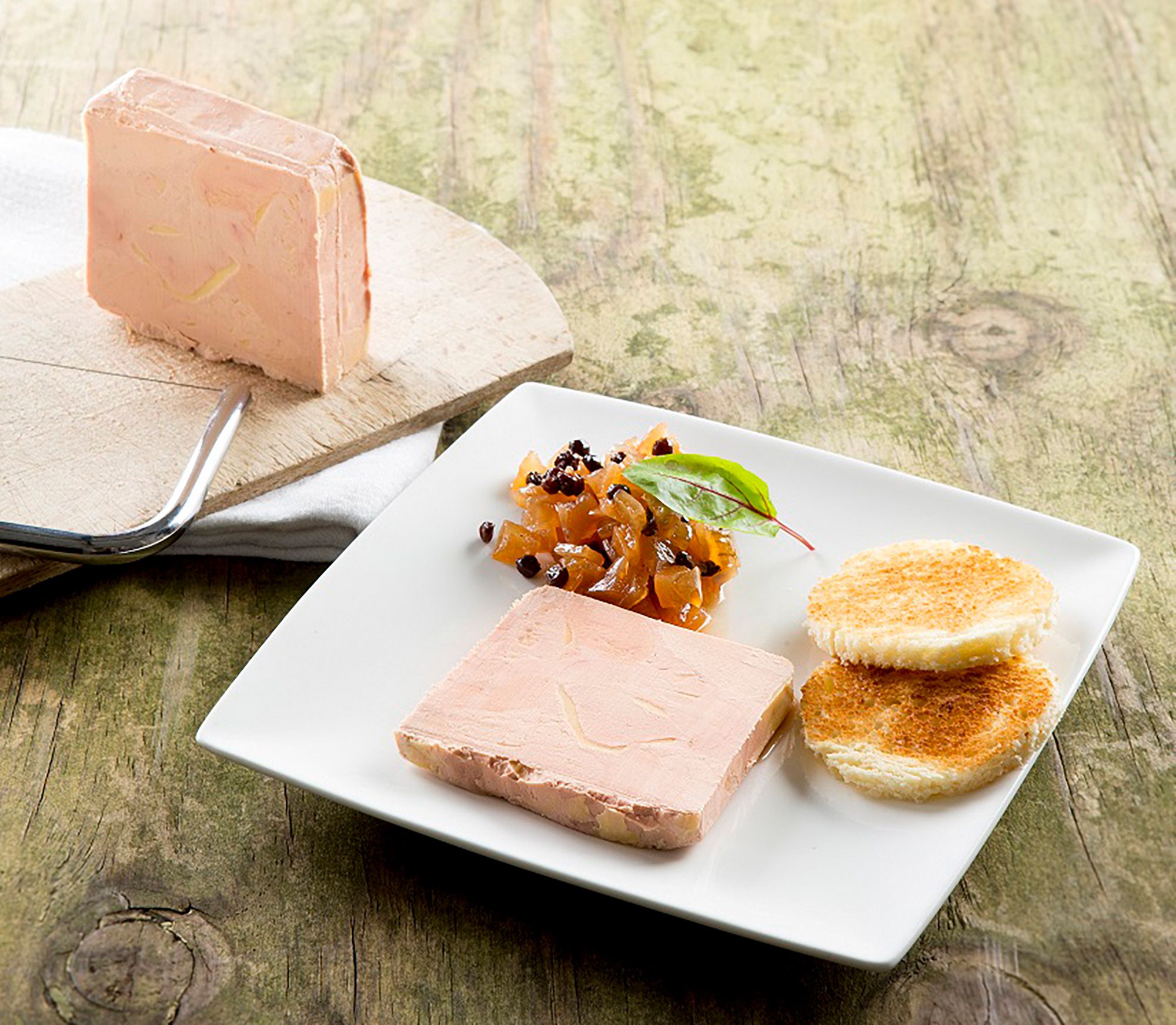Raw Foie Gras
Authentic
Choose this vacuum-sealed raw foie gras for an authentic taste experience. This type of foie gras is lightly pasteurised at a low, 60° Celsius temperature. Store in the fridge.
And our foie gras is no exception.
Michel Petit was born Belgian, but he wasn’t born a foie gras producer. But he found a way to become one! He had already been breeding ducks before he started making them into gourmet quality products. He learned the trade from the world’s best training school– the small foie gras producers in the Périgord.
The quality of our base ingredients is of quintessential importance at Ferme d’Upignac. We use Moulard ducks for our products, which are a cross between Peking and Muscovy ducks. We use the traditional method to make foie gras at our modern workshop in Upigny, which is located just a kilometre from our farm. We don’t make conserves because foie gras that is cooked too long loses both volume and taste. Instead, we vacuum seal it to preserve its full aroma and freshness.
We are forever looking for ways to increase the pleasure of eating our products. Upignac is a master at the art of preparing foie gras with subtle aromas and a fantastic texture. We offer raw, fully cooked and semi-cooked foie gras as well as foie gras that has been cooked in a cheese cloth (‘au torchon’) with a subtle mix of herbs at low heat.
Goose foie gras has a beige to light-pink colour and a soft, delicate taste. Duck foie gras is smaller in size and has a more ochre-pink colour. It is especially beloved for its savoury flavour. Its authentic aromas are a treat for the taste buds.

Foie gras is traditionally paired with a sweet wine like a sauterne, monbazillac or jurancon. But it also goes exceptionally well with champagne and even white wines with body like a graves.
Take the foie gras out of the fridge 10 to 15 minutes before serving. Do not open the wrapping until immediately before serving. Cut the foie gras into slices with a lyre (a slicer designed specifically for foie gras) or non-serrated knife that you’ve briefly held under warm water. Serve on a cold plate.


Choose this vacuum-sealed raw foie gras for an authentic taste experience. This type of foie gras is lightly pasteurised at a low, 60° Celsius temperature. Store in the fridge.
A whole raw liver lobe is seasoned with a delicate mix of salt, pepper and Armagnac. It is cooked in a cheese cloth at a low temperature. This type of foie gras has a slightly coarser texture and a savoury, authentic taste.
Chaque jour de l’année, il se passe quelque chose à la Ferme d’Upignac.
